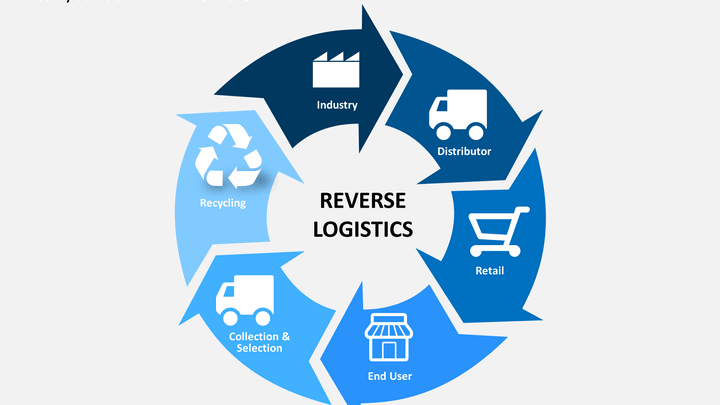Integrating Invoicing Systems with WMS
- How Last-Mile Delivery Was Affected During Covid-19 - March 30, 2024
- WMSOne Invoicing SaaS vs Traditional Invoicing Methods: - March 29, 2024
- Integrating Invoicing Systems with WMS - March 27, 2024
Introduction:
This case study examines the integration of invoicing systems with a Warehouse Management System (WMS) at a logistics company. The organization faced significant challenges with manual invoicing processes, leading to errors, delays, and customer dissatisfaction. To streamline operations and improve accuracy, the company decided to integrate an automated invoicing system with its existing WMS.
Background
The company handles inventory and shipping for various clients, managing thousands of transactions daily. Previously, invoicing was done manually, involving extensive paperwork and data entry. This method was prone to errors and inefficiencies, causing delayed payments and strained client relationships.
Objectives and Solutions
1. Reduce Invoicing Errors and Discrepancies
- Current State: Manual invoicing processes resulted in frequent errors and discrepancies, such as incorrect item quantities, pricing errors, and mismatched inventory records.
- Solution: Implement an automated Invoicing Systems integrated with the WMS to eliminate manual data entry. Utilize real-time data synchronization to ensure accuracy.
- Actions:
- Select a cloud-based invoicing solution compatible with the WMS.
- Use middleware to facilitate seamless data exchange between systems.
- Conduct thorough testing to ensure data consistency.
- Metrics: Measure the reduction in invoicing errors by comparing error rates before and after the integration, targeting a 90% reduction.
2. Decrease Invoice Processing Time
- Current State: The manual invoicing process was time-consuming, often taking days to complete, leading to delayed payments and cash flow issues.
- Solution: Streamline the invoicing process through automation, allowing invoices to be generated in real-time based on WMS data.
- Actions:
- Automate workflows to generate invoices immediately upon transaction completion.
- Configure the system to handle complex billing scenarios, such as partial shipments and returns.
- Integrate electronic payment processing to expedite payment cycles.
- Metrics: Track the average time taken to process an invoice before and after integration, targeting a 70% reduction in processing time.
3. Enhance Data Accuracy and Consistency
- Current State: Data inconsistencies between the WMS and the invoicing system caused mismatches and errors in invoices, impacting financial reporting and customer trust.
- Solution: Ensure real-time synchronization between the WMS and the invoicing system to maintain accurate and consistent data.
- Actions:
- Implement a data cleaning and standardization process before migration.
- Set up real-time data synchronization between the WMS and invoicing system.
- Regularly audit the data to ensure ongoing accuracy and consistency.
- Metrics: Monitor the consistency of data entries across systems and the frequency of data discrepancies, aiming for near-perfect data consistency.
4.Improve Customer Satisfaction and Retention
- Current State: Frequent invoicing errors and delays resulted in customer dissatisfaction, leading to complaints and the risk of losing clients.
- Solution: Enhance the accuracy and timeliness of invoices to improve customer satisfaction and strengthen client relationships.
- Actions:
- Implement an automated customer notification system to inform clients of invoice generation and payment status.
- Customize invoice templates to meet client-specific requirements.
- Establish a dedicated customer support team to address invoicing issues promptly.
- Metrics: Conduct customer satisfaction surveys and track retention rates, targeting a 20% increase in customer satisfaction scores and improved retention rates.
Challenges
- Data Inconsistency: Manual data entry often led to discrepancies between inventory records and invoices.
- System Compatibility: Ensuring seamless integration between the WMS and the new invoicing system was crucial.
- User Training: Staff needed to be trained to use the new integrated system effectively.
- Cost: Managing integration costs and minimizing downtime during implementation.
- Regulatory Compliance: Ensuring the system complied with tax laws and industry regulations.
Implementation Process
- Requirement Analysis
- Conducted a comprehensive analysis of existing processes.
- Identified key pain points and requirements for the new system.
- Selection of Invoicing Systems
- Evaluated several invoicing systems for compatibility with the WMS.
- Choose a cloud-based invoicing solution with robust integration capabilities.
- Integration Strategy
- Developed a detailed integration plan.
- Used middleware to facilitate communication between the WMS and the invoicing system.
- Data Migration
- Cleaned and standardized existing data.
- Migrated historical invoicing data to the new system.
- System Configuration
- Customized the invoicing system to meet the company’s specific needs.
- Configured automated workflows for invoice generation based on real-time WMS data.
- User Training
- Conducted comprehensive training sessions for staff.
- Developed user manuals and provided ongoing support.
- Testing
- Performed extensive testing to ensure data accuracy and system reliability.
- Conducted pilot runs to identify and resolve potential issues.
- Go-Live
- Gradually rolled out the new system in phases to minimize disruption.
- Monitored performance and addressed any post-implementation issues.
Results
- Improved Accuracy
- Invoicing errors reduced by 90%.
- Achieved consistent data synchronization between WMS and the invoicing system.
- Increased Efficiency
- Reduced invoice processing time by 70%.
- Enabled real-time invoice generation and automated workflows.
- Enhanced Customer Satisfaction
- Improved invoice accuracy and timeliness led to better client relationships.
- Increased customer trust and retention rates.
- Regulatory Compliance
- Ensured compliance with relevant tax regulations and industry standards.
- Simplified audit processes with accurate and accessible records.
- Cost Management
- Managed integration costs effectively.
- Achieved a return on investment within 12 months through operational efficiencies and improved cash flow.
Lessons Learned
- Thorough Planning
- Detailed planning and requirement analysis were crucial for successful integration.
- Stakeholder Involvement
- Involving all stakeholders, including IT, finance, and operations, ensured alignment and buy-in.
- Effective Training
- Comprehensive training and support were essential for user adoption and system utilization.
- Incremental Rollout
- Phased implementation minimized disruptions and allowed for fine-tuning.
- Continuous Monitoring
- Ongoing monitoring and feedback mechanisms helped maintain system performance and address issues promptly.
Conclusion
The integration of the invoicing system with the company’s WMS significantly improved operational efficiency, accuracy, and customer satisfaction. This case study highlights the importance of thorough planning, stakeholder involvement, effective training, and continuous monitoring in achieving successful system integration. The solutions and strategies employed can serve as a valuable reference for other organizations facing similar challenges in invoicing and WMS integration.
Through careful planning, phased implementation, and continuous support, the company achieved its objectives, transforming its invoicing process from a manual, error-prone system to an automated, efficient, and accurate solution. This integration not only improved internal processes but also enhanced customer satisfaction and compliance with regulatory standards.






